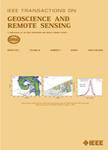版权所有:内蒙古大学图书馆 技术提供:维普资讯• 智图
内蒙古自治区呼和浩特市赛罕区大学西街235号 邮编: 010021

作者机构:Univ Elect Sci & Technol China Dept Microwave Engn Chengdu 610054 Peoples R China Univ Illinois Dept Elect & Comp Engn Urbana IL 61801 USA
出 版 物:《IEEE TRANSACTIONS ON GEOSCIENCE AND REMOTE SENSING》 (IEEE Trans Geosci Remote Sens)
年 卷 期:2014年第52卷第3期
页 面:1825-1833页
核心收录:
学科分类:0808[工学-电气工程] 1002[医学-临床医学] 08[工学] 0708[理学-地球物理学] 0816[工学-测绘科学与技术]
基 金:Key Projects of the Natural Science Foundation of China [60931004, 61231001, 61201281] International Joint Research Project "111 project" [B07046]
主 题:Domain decomposition method finite element method (FEM) hierarchical basis function second-order transmission condition well-logging response
摘 要:The numerical modeling of the advanced electromagnetic well-logging problems is very challenging because it requires tremendous workload of grid meshing and computation. For example, global meshing and simulation have to be done repeatedly for every logging position, because the model includes complex sensor arrays moving continuously along the borehole. In this paper, an efficient nonconformal finite element domain decomposition method is developed to solve these problems efficiently. First, the well-logging model is divided into two nonconformal subdomains so that the sensing arrays inside the borehole are separated from the beds outside. Since the mesh size between different subdomains can be inconsistent, well-logging modeling can significantly reduce the unknowns and computational cost. Second, a second-order transmission condition is implemented successfully in a quasi-symmetrical form via a novel treatment of Gaussian integration on the nonconformal interface. Finally, a hierarchical hexahedral basis function is introduced to further reduce the unknowns and extend the applicability of the method to multiscale problems. Numerical examples show that this method greatly reduces the memory cost and speeds up the computation compared with the traditional finite element method, especially when the response needs to be simulated repeatedly while the logging tools keep moving along the borehole.